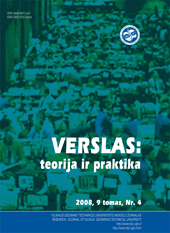Parduotuvių tinklų pirkėjų segmentavimas pagal pirkimo progas
Segmentation of Multiple Retailers' Clients on the Basis of Shopping Occasions
Author(s): Robertas Ivanauskas, Sigitas UrbonavičiusSubject(s): Economy
Published by: Vilnius Gediminas Technical University
Keywords: Retailing; multiple retailer; segmentation; differentiation; shopping occasion; customer share.
Summary/Abstract: In case of multiple retailers, segmentation procedures are quite complicated because chain stores most often seek to serve the largest possible group of customers. Therefore traditional segmentation, based on demographic, geographic and psychographic criteria here is not fully suitable. For this reason more attention should be paid towards segmentation that is based on customer behaviour. This issue is not yet comprehensively analyzed and not many empirical surveys are performed yet. This article analyses the possibilities to segment markets on the basis of shopping occasions. The analysis concentrates on customers of chain stores that are operating in Lithuania. Data were collected during two surveys. The first one was qualitative, and it included a set of in-depth interviews with customers. The second was quantitative and it was performed as a part of National Omnibus survey. Both surveys took place in July – August, 2004. The research results allowed defining several typical shopping occasions. These shopping occasions can be characterized by the type of needed products, their quantity and shopping frequency. Depending on the specifics of the concrete needs at the moment, the same customers experience various needs and this triggers different shopping occasions. Then they relate specific shopping occasion with the types and brands of their known retail outlets. Customers were able to even name the chain stores, which in their opinion were the most suitable for a particular shopping occasion. The fact that the majority of customers occurs in several buying occasions and prefers different stores allows concluding that a ‘customer share’ concept can be very much applicable in retailing. Supporting the idea of differentiation, this concept could help understanding, evaluating and satisfying customers’ needs better. As a result, retailers can improve their overall competitive positions. The results allow claiming that segmentation of multiple retailers’ customers on the basis of shopping occasions is efficient and deserves more attention from managers of chain stores. It is important to further analyse the possibilities of segmentation according to shopping occasions in retailing, thus broadening traditional segmentation according to demographic, geographic and psychographic characteristics of retail customers. Possibly, the list of initially defined shopping occasions has to be expanded or changed. Finally, a similar survey of chain stores operating in the other retail sectors would help evaluate whether the concept is applicable under broader circumstances.
Journal: Verslas: teorija ir praktika
- Issue Year: 2006
- Issue No: 1
- Page Range: 37-44
- Page Count: 8
- Language: Lithuanian

